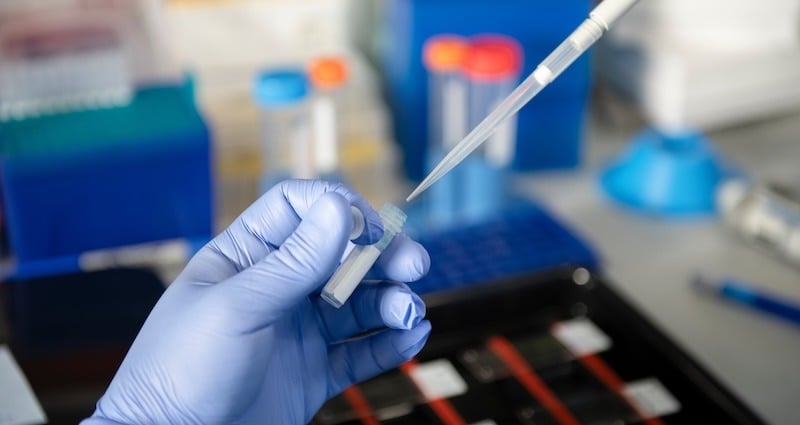
Cervical health is dependent on tools like cervical brushes, which are used in gynecological and diagnostic procedures – they play a critical role in collecting cells for accurate testing and early detection of health conditions.
Choosing the right cervical brush is vital to ensure patient comfort, proper specimen collection, and reliable diagnostic results. In this guide, we’ll explore the key features to consider and provide practical advice for healthcare providers.
In this article, we’ll explore the concept of a cervical brush and the importance of using one in a healthcare setting for top-notch women’s care.
What is a cervical brush?
A cervical brush is a specialized medical tool used to collect cells from the cervix for diagnostic purposes, such as Pap smears, HPV testing, and Sexually Transmitted Infections (STI) screenings. Unlike spatulas or swabs, cervical brushes are designed with bristles that can effectively collect cervical cells while minimizing discomfort.
These brushes are vital for early detection of cervical cancer, STIs, and other gynecological conditions. Their precision and efficiency make them indispensable in ensuring accurate and reliable diagnostic results.
Why are cervical brushes important for women’s health?
Cervical brushes are at the forefront of early detection and prevention. Regular screenings using these tools help identify conditions like cervical cancer and STIs in their earliest stages, improving treatment outcomes and saving lives.
By facilitating efficient and accurate testing, cervical brushes play a key role in advancing women’s health.
Key features to look for in a cervical brush
When looking for the best type of tool, there are some key features and considerations you’ll want to review a product for:
Brush design
A well-designed cervical brush adapts to the anatomy of the cervix. Rounded or tapered brushes are ideal for navigating this sensitive area. Look for brushes with soft, flexible bristles that ensure adequate cell collection while minimizing the risk of discomfort or tissue damage.
Material quality
The materials used in a cervical brush significantly impact its safety and performance. Opt for brushes made of medical-grade, biocompatible plastics or nylon. These materials are durable, ensuring that the brush maintains its structure during the procedure and avoids introducing contaminants.
Patient comfort
Patient comfort should be a priority. Brushes with soft bristles and ergonomic handles allow for precise control by practitioners while reducing discomfort during cell collection. A comfortable experience can improve patient compliance with routine screenings.
Specimen collection efficiency
Effective brushes collect a sufficient number of cells for accurate diagnosis. Brushes designed to minimize contamination and excessive bleeding ensure high-quality samples, reducing the need for repeat procedures.
Compatibility with diagnostic methods
Cervical brushes must work seamlessly with both liquid-based cytology and traditional smear techniques. Additionally, they should meet the standards of lab processing methods to ensure smooth diagnostic workflows.
When to use a cervical brush
Cervical brushes are used in various diagnostic situations, including:
-
Routine pap smears: Detecting abnormal cells that could indicate cervical cancer.
-
HPV testing: Identifying high-risk strains of the human papillomavirus.
-
STD screenings: Collecting samples for detecting infections like chlamydia or gonorrhea.
-
Post-treatment monitoring: Evaluating the effectiveness of treatment for cervical conditions.
Please note that special care should be taken when using cervical brushes for high-risk populations or patients with unique anatomical challenges.
Common misconceptions about cervical brushes
It is commonly believed that all cervical brushes are interchangeable. However, different diagnostic needs may require specialized brushes.
Additionally, some myths suggest that brushes can cause significant discomfort or complications. In reality, well-designed brushes and proper techniques minimize these risks.
Let’s discuss the types of cervical brushes in more detail.
Types of cervical brushes
Cervical brushes come in a variety of styles and designs, each tailored to specific diagnostic needs. Selecting the right brush is essential for accurate specimen collection and patient comfort. Below are some of the most popular types of cervical brushes used in routine women’s health procedures:
Polyester or rayon-tipped applicators
Polyester and rayon-tipped applicators are versatile tools often used for collecting cervical and endocervical cells. These brushes are designed to gently contact the cervical surface, ensuring adequate specimen collection without causing discomfort. They are a cost-effective choice for healthcare providers and can be used in a variety of diagnostic applications.
Rovers® Cervex-Brushes
The Rovers® 8" Endo-Cervex Brush® w/Polypropylene Handle (SKU #: 2196) is a highly regarded option for cervical cytology. Its unique design features soft, flexible bristles arranged in a rounded shape, allowing for comprehensive cell collection from the ectocervix and endocervix in a single motion. These brushes are particularly effective for use in liquid-based cytology, ensuring high-quality samples with minimal contamination.
Cytology Histobrush® Collection
Puritan’s Cytology Histobrush® collection includes a range of brushes specifically designed for cytological testing. These brushes feature fine, nylon bristles that are gentle on delicate cervical tissues while ensuring efficient collection of diagnostic material.
The Histobrush® is compatible with both traditional smear techniques and liquid-based cytology, making it a reliable choice for healthcare providers.
Here’s an example: Histobrush 7" Soft Tapered Nylon Cytology Collection Brush w/Polystyrene Handle
Best Practices for using a cervical brush
When using a cervical brush, following best practices is essential for obtaining high-quality diagnostic samples and providing a positive patient experience. From preparation to post-procedure care, these steps will help you maximize the effectiveness of your cervical brush while ensuring patient safety and comfort.
Step 1: Set the stage for effective sample collection
Proper preparation is the foundation of a successful cervical brush procedure. To appropriately prepare, we recommend:
-
Selecting the right brush type: Choose a brush suited to the diagnostic procedure. Consider factors like brush design, bristle softness, and compatibility with collection methods (e.g., liquid-based cytology or traditional smears).
-
Ensuringproper handling: Handle the brush with care to avoid contamination. This is crucial for maintaining the integrity of the collected sample.
-
Educating the patient: Clearly explain the procedure to the patient and address any questions or concerns to reduce anxiety and ensure cooperation.
Step 2: Collect high-quality samples with care
A precise and patient-centered technique is key to obtaining a reliable sample. To do this, we recommend:
-
Gently inserting the brush: Position the patient appropriately, then carefully insert the cervical brush into the cervical canal. Avoid causing discomfort or distress during this step.
-
Rotating slowly and carefully for effective cell collection: Gently rotate the brush 360 degrees to collect a sufficient sample of epithelial cells from the ectocervix and endocervix.
-
Minimizing discomfort as much as possible: Employ a gentle approach, using soft-bristled brushes designed for patient comfort, such as Puritan’s Cytology Histobrush®.
Step 3: Ensure specimen integrity and patient follow-up
After the sample is collected, proper handling and communication are critical. We recommend:
-
Storing and labeling samples correctly: Place the collected specimen in the appropriate transport medium or slide preparation system. Clearly label the sample with patient details to maintain traceability.
-
Communicating with the patient: Share the next steps, including when they can expect results and any follow-up care required. Provide reassurance and answer any lingering questions.
Why Choose Puritan for your cervical brush needs?
Trusted by healthcare providers worldwide, Puritan’s brushes meet the highest medical standards, ensuring reliable performance for diagnostic procedures. Puritan’s cervical brushes are designed with both patient comfort and practitioner efficiency in mind.
Features include:
-
Soft, flexible bristles: Ideal for gentle cell collection with minimal discomfort.
-
Ergonomic handles: Provide better control for precise specimen collection.
-
Versatile compatibility: Suitable for both liquid-based cytology and traditional smear techniques.
Stock up on Puritan’s trusted cervical brushes for your healthcare practice
Selecting the right cervical brush is essential for effective diagnostic procedures and patient care. From ensuring patient comfort to collecting accurate specimens, the right tools make all the difference.
Explore Puritan’s range of cervical brushes today to find solutions that meet your practice’s needs.
Need support in finding the right product for your needs? Contact a product specialist or visit our website for more information.




